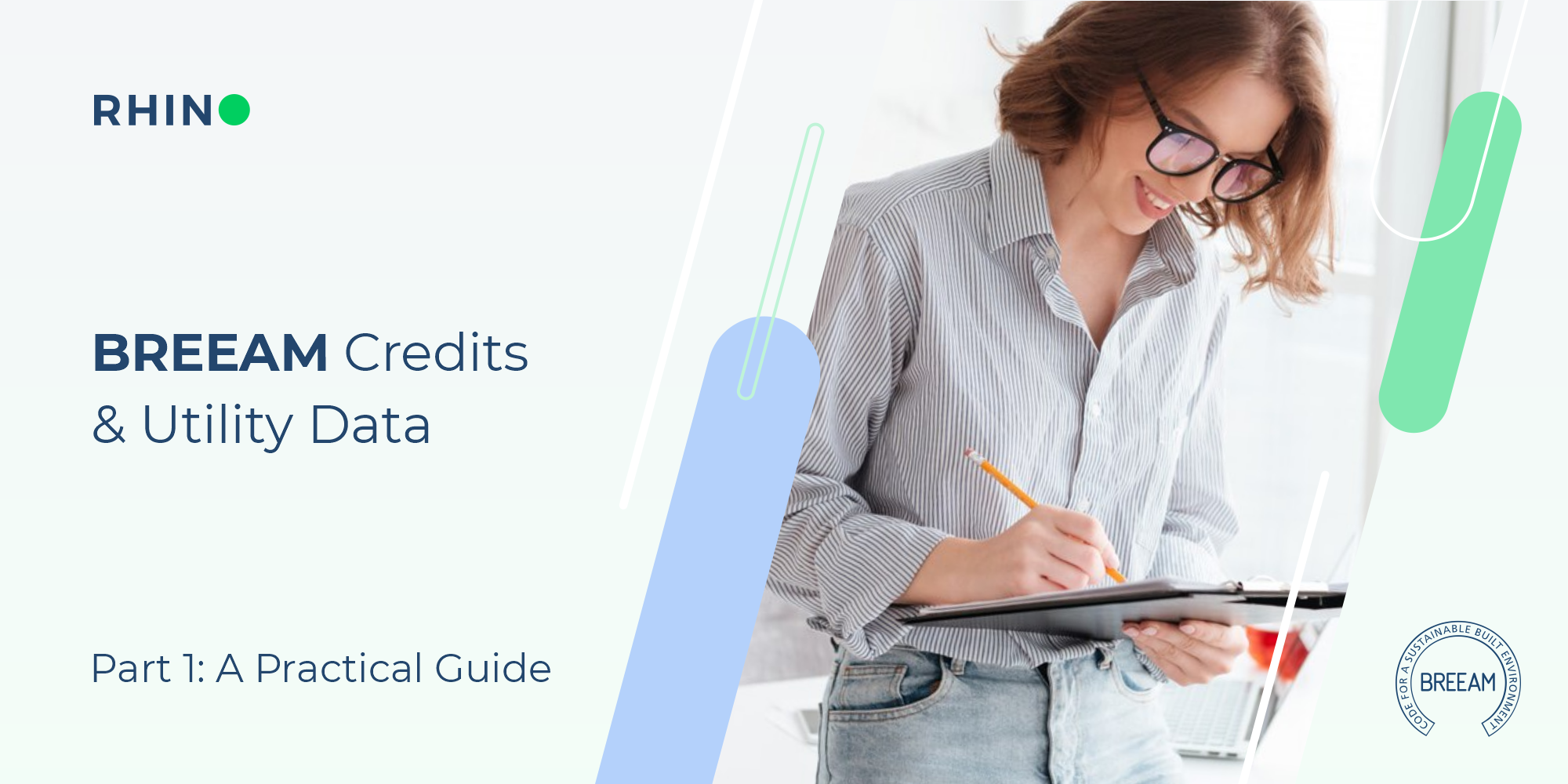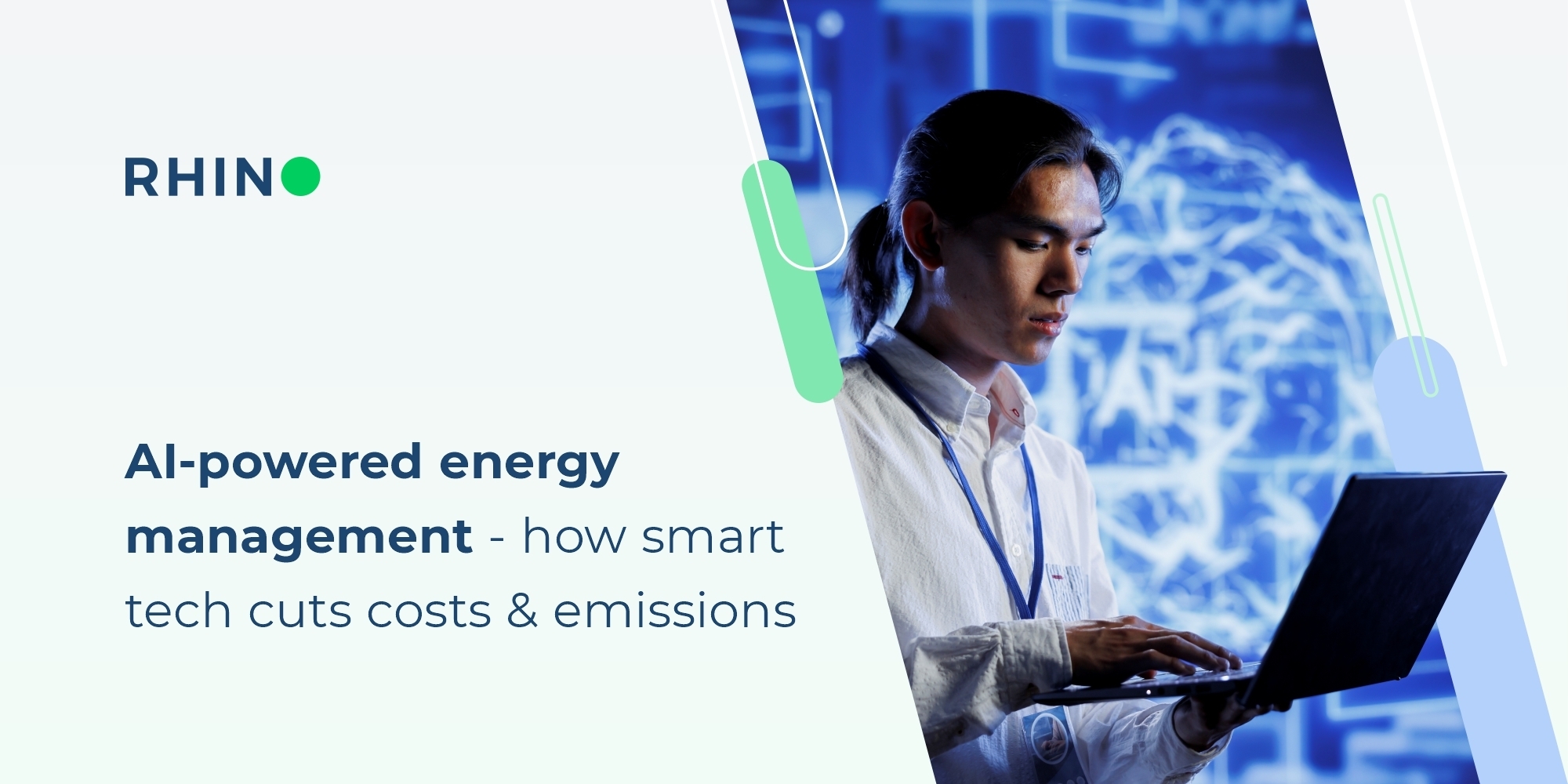In today’s ESG-focused real estate industry, knowing how to gain BREEAM credits can give asset owners and managers a significant advantage. BREEAM (Building Research Establishment Environmental Assessment Method) is a leading green building certification that awards points (“credits”) for sustainability features in design, construction, and operation. Remote energy and utility monitoring platforms empower commercial real estate stakeholders to meet these criteria across all asset classes – from offices and logistics centers to retail and mixed-use developments. By providing accurate, real-time data on energy and water usage, as well as engaging both managers and occupants, these solutions make it self-sufficient to earn key BREEAM credits in categories like Energy (Ene 01, Ene 02), Water (Wat 01–03), Management (Man 02, Man 04), and even Innovation, often without needing third-party consultants.
In this first part of the series, we explain how remote energy & utility monitoring solutions map to specific BREEAM schemes (New Construction, Refurbishment, and In-Use) and credit requirements, with official references and practical insights.
In Parts 2, 3, and 4 of this series, we explore how real-time utility monitoring directly supports the BREEAM criteria across the most impactful categories: Energy, Water, and Management. Each has been given its dedicated article — Part 2 focuses on Energy performance and sub-metering, Part 3 covers Water efficiency and leak detection, and Part 4 explains how data-driven management and occupant engagement earn critical Management credits. Together, they provide a practical roadmap to securing high-value BREEAM points across any building type or scheme.
Real-time Utility Data and BREEAM: An Overview
BREEAM certification is achieved by accumulating credits across various sustainability categories (What is BREEAM?). An all-in-one monitoring platform directly contributes to these credits by offering sub-metering, leak detection, automated reporting, and tenant engagement. Whether you’re pursuing BREEAM New Construction (NC) for a new development, Refurbishment and Fit-Out (RFO) for a major renovation, or BREEAM In-Use (BIU) for an existing building, solutions like Rhino (www.rhino.energy) provide the necessary infrastructure to capture data and optimize performance in real time. All asset types – office high-rises, shopping centers, warehouses, mixed-use complexes, and residential portfolios – can leverage these solutions to boost their BREEAM score.
By integrating energy, gas, and water metering on a single platform, building owners eliminate the need for separate solutions for each utility. Importantly, it bridges design and operation: a building designed with monitoring in mind is better prepared to meet not only design-stage credits but also perform strongly in operation (aligning with BREEAM’s intent to verify actual performance). In short, real-time utility monitoring serves as a “digital backbone” for BREEAM compliance, ensuring that sustainability measures are not just planned on paper but actively managed and proven with data.
BREEAM Categories Covered by Real-time Energy & Utility Monitoring: The platform contributes to multiple BREEAM categories, primarily Energy, Water, and Management, which are core to a building’s environmental performance. These areas are heavily weighted in BREEAM’s scoring – for example, Energy and Management together can comprise over a quarter of the total score. By excelling in these, projects move closer to ratings like Very Good, Excellent, or Outstanding.
Innovation: Exceeding Requirements with a Cutting-Edge Approach
Beyond the standard categories, BREEAM offers Innovation credits as a way to reward projects that push the envelope of sustainable design and operation. Up to 10 additional credits can be earned through innovation, potentially boosting the building’s rating by an entire level if used wisely. Rhino’s advanced monitoring and analytics platform can be a key to unlocking these extra points in a couple of ways:
- Exemplary Performance in Existing Credits: BREEAM awards innovation credits when a project far exceeds the normal credit requirements (known as exemplary level criteria). Rhino’s impact on energy and water performance can help reach these tougher benchmarks. For example, an exemplary level for Energy or Water might require a percentage reduction beyond the highest standard credit. By actively managing consumption with Rhino and engaging occupants to save more, a building might achieve an energy reduction or water use level that qualifies as exemplary. Consider the earlier case where tenants reduced energy use by 39% using Rhino’s app engagement – that kind of saving is well above typical targets and could translate into an exemplary outcome under the Ene 01 credit (operational energy improvement) or Man 02 (if exemplary criteria include exceptional occupant engagement results). Similarly, if Rhino’s leak detection and rapid response prevents water waste to an extent that the building’s water consumption is drastically lower than baseline, the project could pursue an exemplary performance in Wat 01. Essentially, Rhino helps you blow past the baseline goals, and BREEAM’s innovation system is designed to recognize such achievements.
- Innovative Technology not Covered by Standard Credits: BREEAM also allows innovation credits for technologies or approaches that deliver sustainability benefits beyond what its standard criteria cover. A remote, AI-enhanced monitoring platform like Rhino could qualify as an innovation in building operation, especially if it’s not commonly used in the region or if it addresses a gap in the BREEAM framework. For instance, BRE (the organization behind BREEAM) sometimes approves “innovation applications” for specific solutions – the ABB example shows a cloud-based energy monitoring SaaS being noted in the context of innovation. Rhino offers a comparable, if not more expansive, service (covering multiple utilities and optional tenant engagement). A project team could apply to BRE for an innovation credit, citing Rhino’s platform as an innovative means of optimizing building performance and occupant behavior. With evidence like energy reductions, ESG-data automation, and integration of tenant experience, there’s a strong case that Rhino provides sustainability benefits beyond the conventional measures. If approved, each such innovation measure is worth one credit. Even without a formal application, the presence of a system that continuously commissions and optimizes the building could be written into the BREEAM assessment report to show leadership in facility management.
- Synergies with Net-Zero and Wellness Goals: Another angle for innovation is how Rhino positions a building for future standards. BREEAM often encourages going beyond current requirements – for example, preparing for net-zero carbon operation. Rhino’s detailed data can feed into a Net Zero Carbon strategy by highlighting paths to further reduce emissions (which might not be explicitly covered under current credits). While not a direct innovation credit, tying your BREEAM narrative to net-zero using Rhino’s capabilities could strengthen an innovation application. Similarly, linking Rhino to occupant health (ensuring good thermal comfort, air quality through proper HVAC control, etc.) bridges into WELL certification territory. A holistic approach that uses one platform to achieve multiple sustainability and wellness certifications could be deemed innovative. Projects pursuing WELL, LEED, and BREEAM together often get noticed for innovation – Rhino’s ability to streamline data for all these makes it a catalyst for multi-certification synergy.
In practical terms, using Rhino de-risks the pursuit of Innovation credits. You have data to verify any bold claims and a mechanism to continue improving. Innovation credits require an assessor’s and BRE’s approval, but with Rhino, you can confidently demonstrate that, for example, “our building achieved a level of energy performance (or stakeholder engagement, or water efficiency) seldom seen, thanks to this innovative monitoring approach.” Because Rhino aligns economic incentives (cost savings) with environmental ones, investing in this innovation has a clear ROI for the building owner – an argument that certainly strengthens the case for any sustainability innovation.
Conclusion: Accelerating BREEAM Success with Real-Time Utility Data from Rhino
Rhino’s remote energy and utility monitoring platform is more than just a compliance tool – it’s a driver of genuine performance improvements that make achieving BREEAM certification credits simpler and more effective. By covering critical credits in Energy (from sub-metering to actual consumption reduction), Water (from metering to leak detection), and Management (from data-driven policies to occupant engagement), Rhino acts as a one-stop solution for many of BREEAM’s demands. It empowers asset managers and sustainability teams to move beyond checkbox compliance, using real-time insights to run buildings more efficiently and greener, which in turn secures the desired BREEAM rating. Importantly, the platform itself provides the functionality and evidence needed for the credits, and its outputs can be directly used in the BREEAM assessor’s report.
For any commercial real estate stakeholder aiming for BREEAM certification (be it a new development targetting Excellent or an existing portfolio aiming to improve its In-Use scores), Rhino offers peace of mind. You know that the essential monitoring systems are in place, data is being collected and reported automatically, and issues are flagged before they become problems – all of which BREEAM explicitly rewards. The result is not only a certified building but one that operates optimally by design.
In Part 2, we'll break down the BREEAM Energy Credits, showing how real-time utility data helps unlock performance-based credits by tracking energy use, improving sub-metering, and enabling carbon reduction strategies across both New Construction and In-Use schemes.
In Part 3: We’ll look at Water Credits — including leak detection, water-saving fixtures, and best practices for potable water reduction across BREEAM schemes.
In Part 4: We’ll explore Management Credits — covering policies, procedures, and reporting practices that support ESG compliance and operational excellence across both BREEAM New Construction and In-Use schemes.




